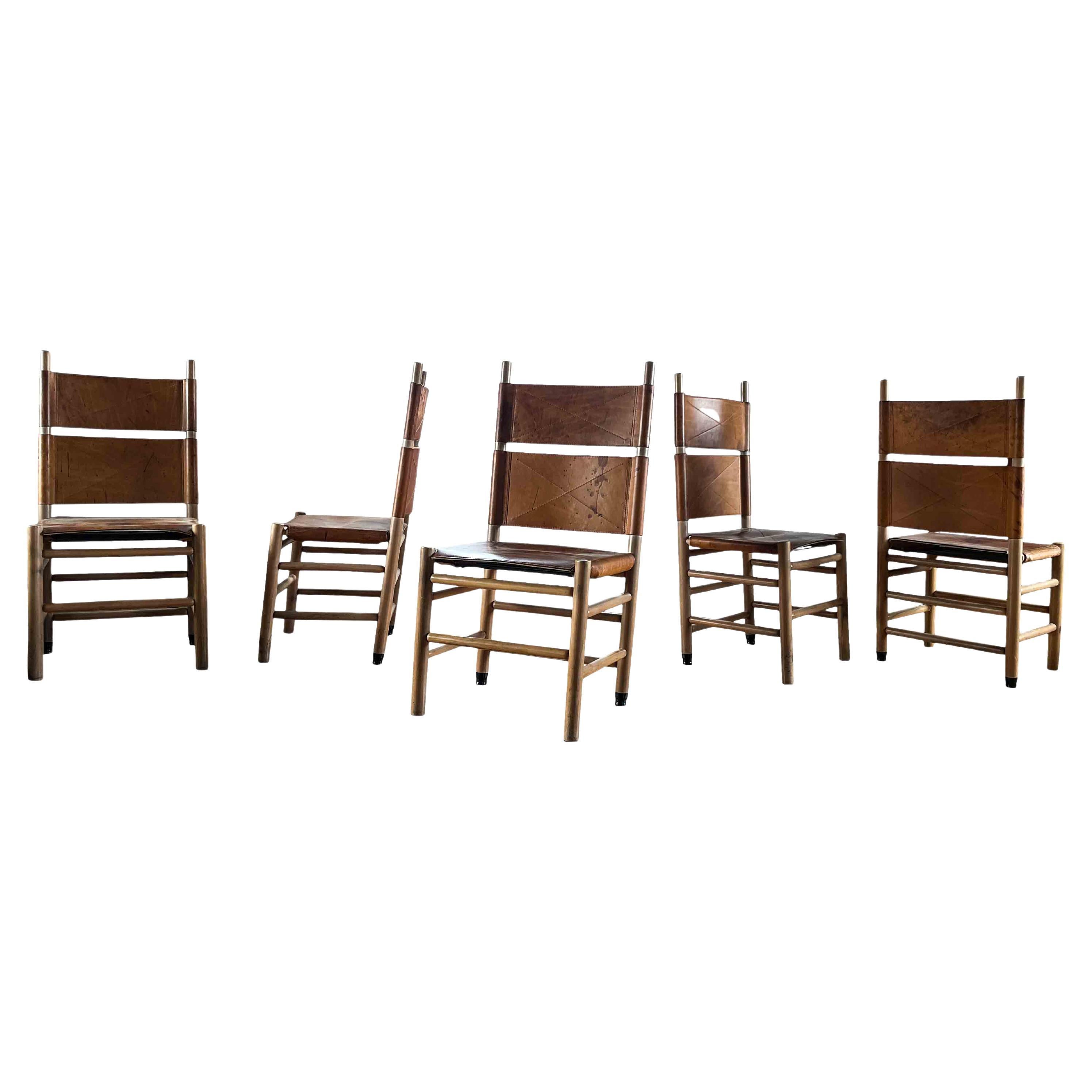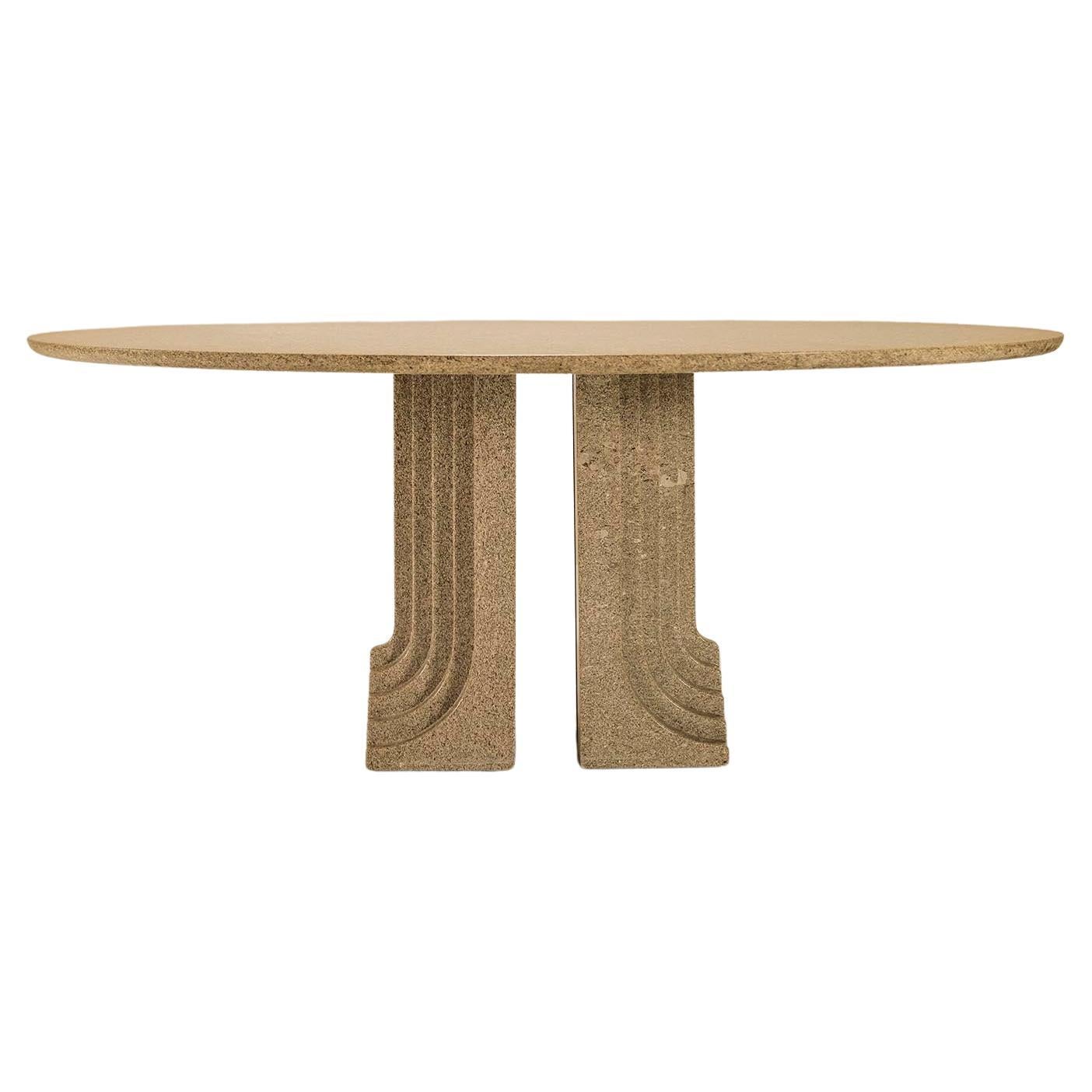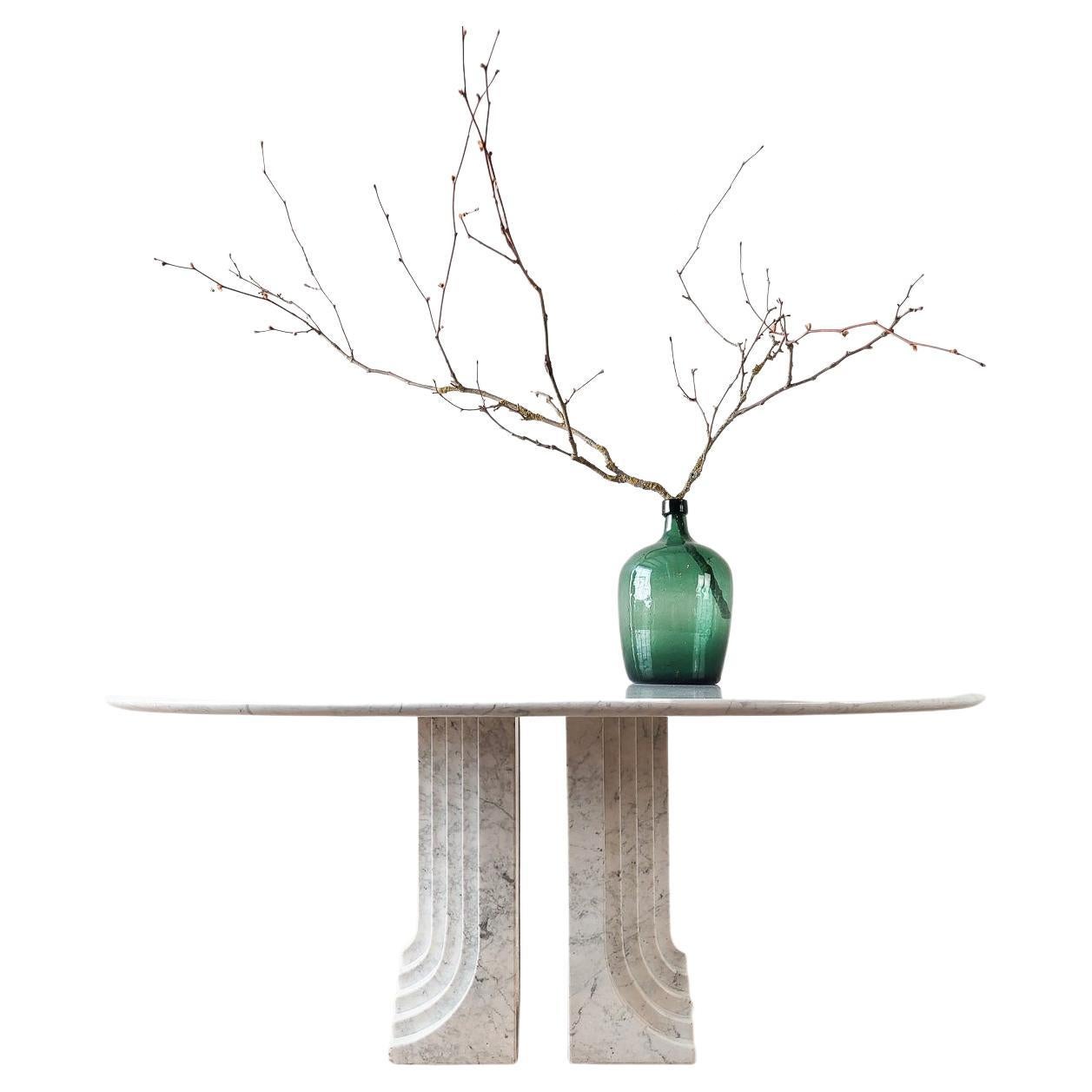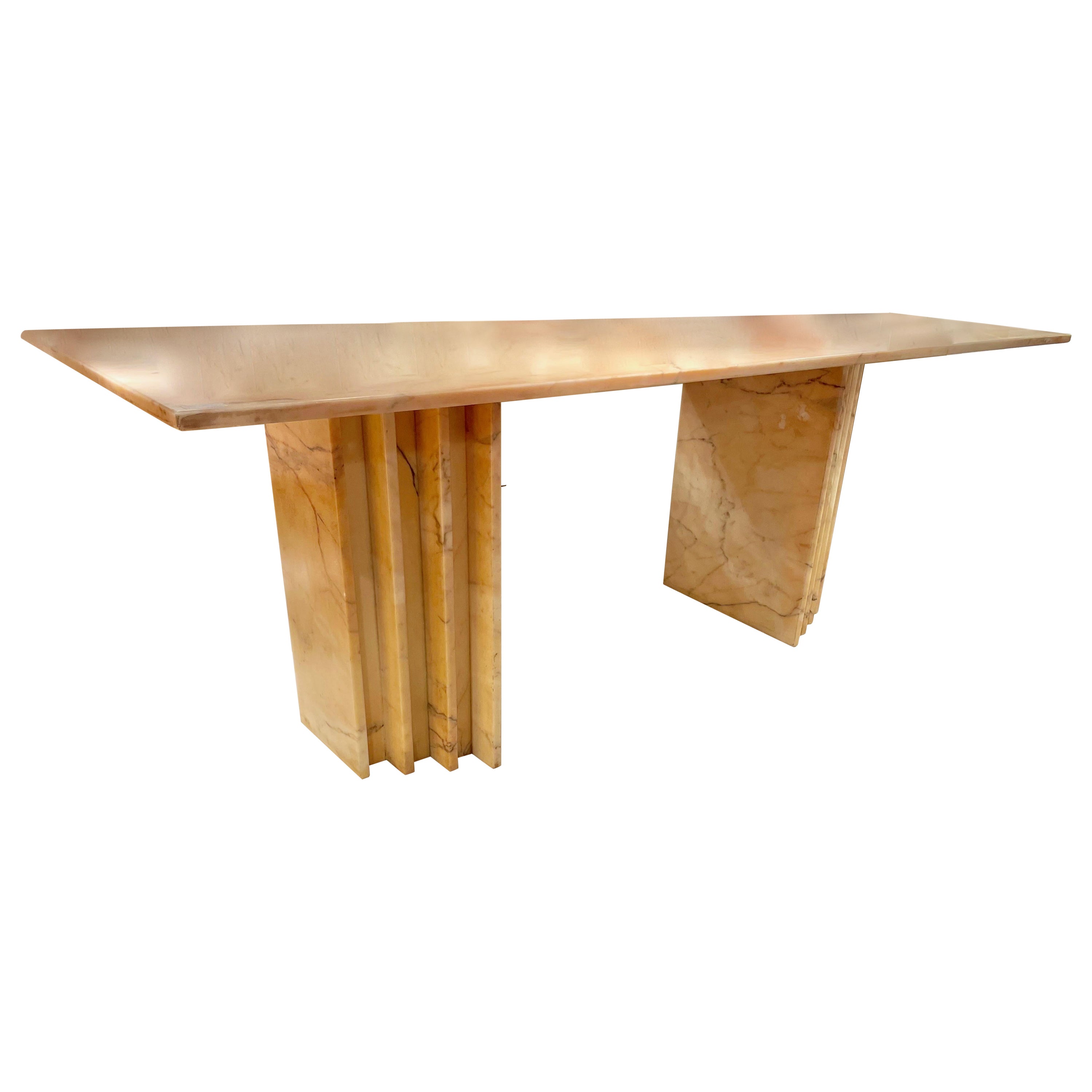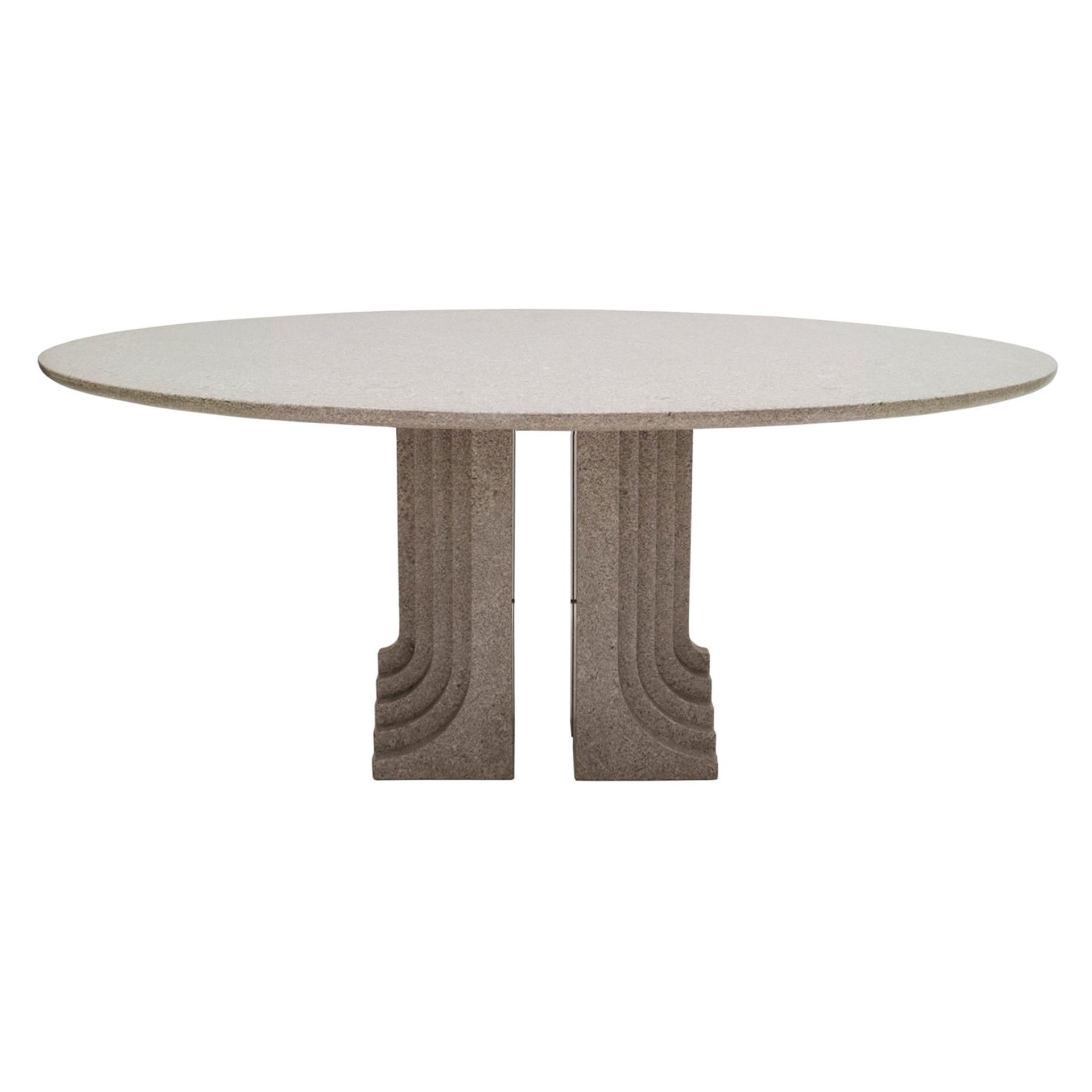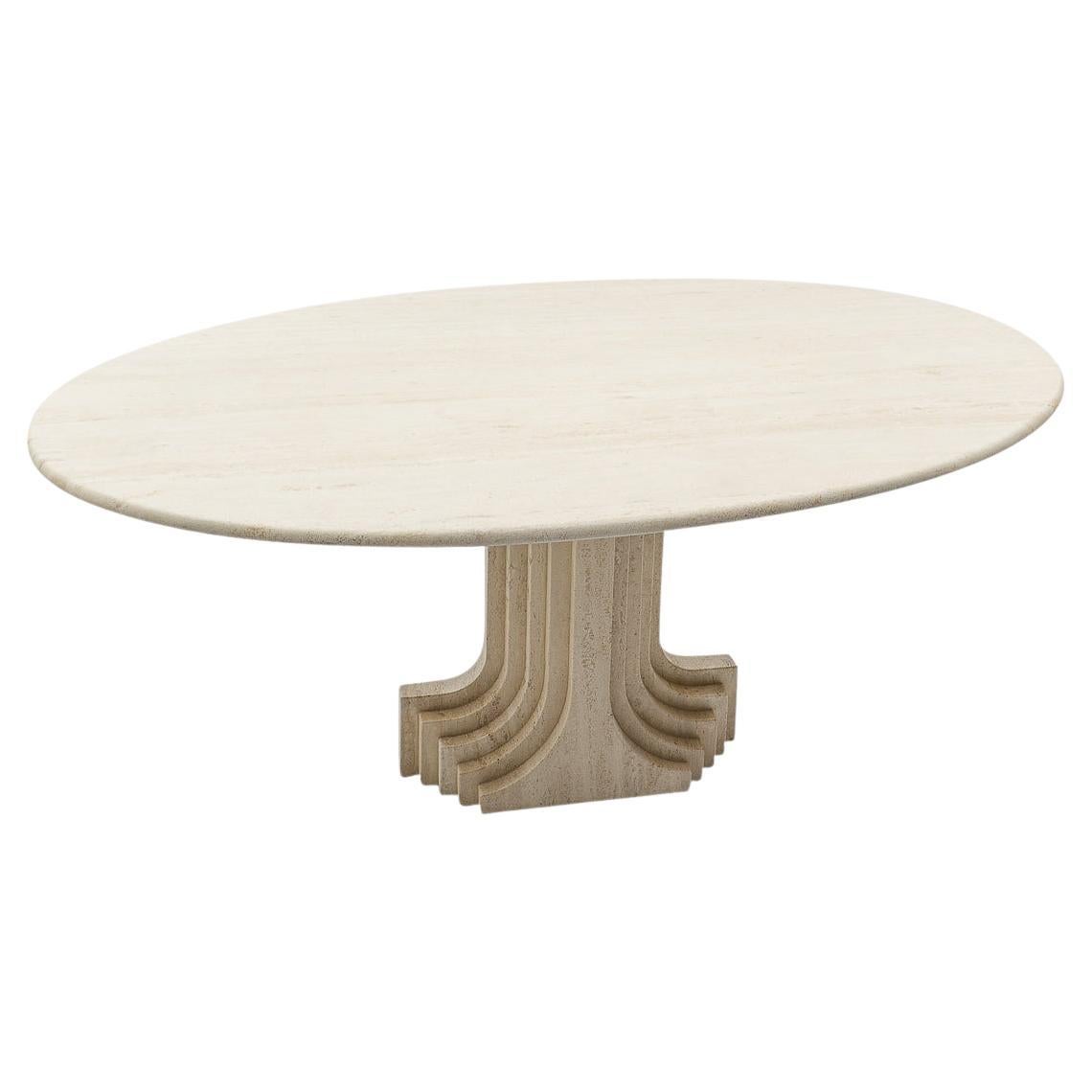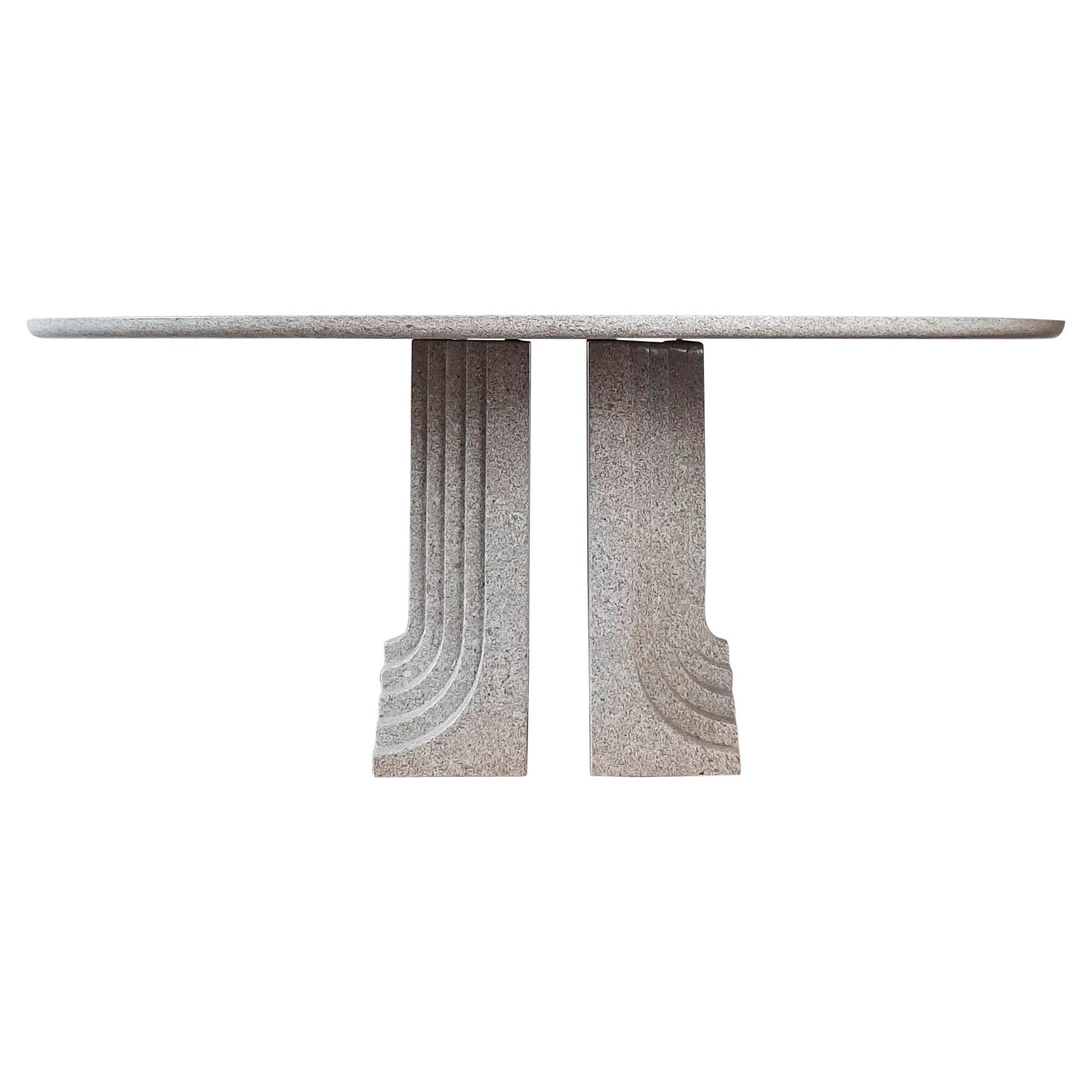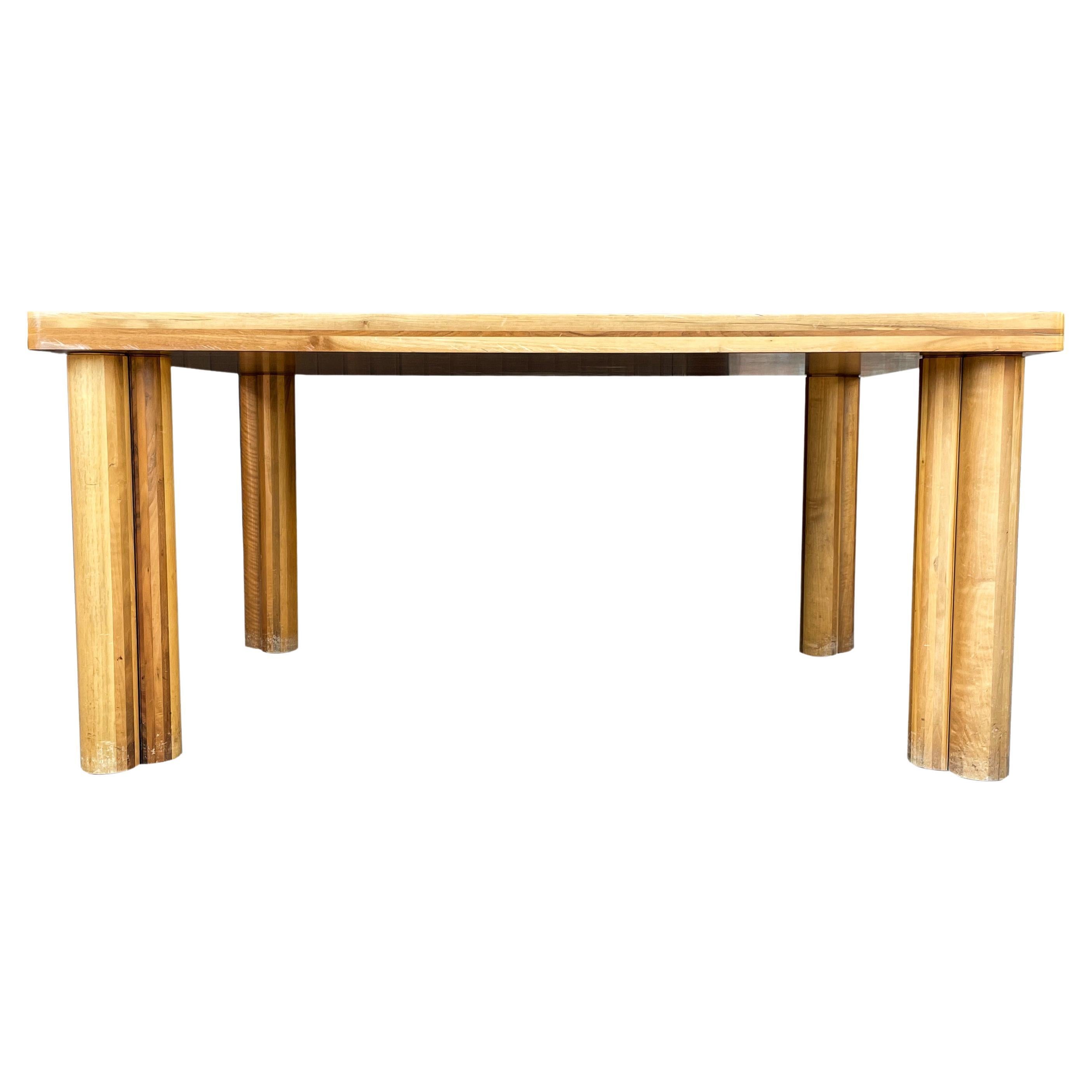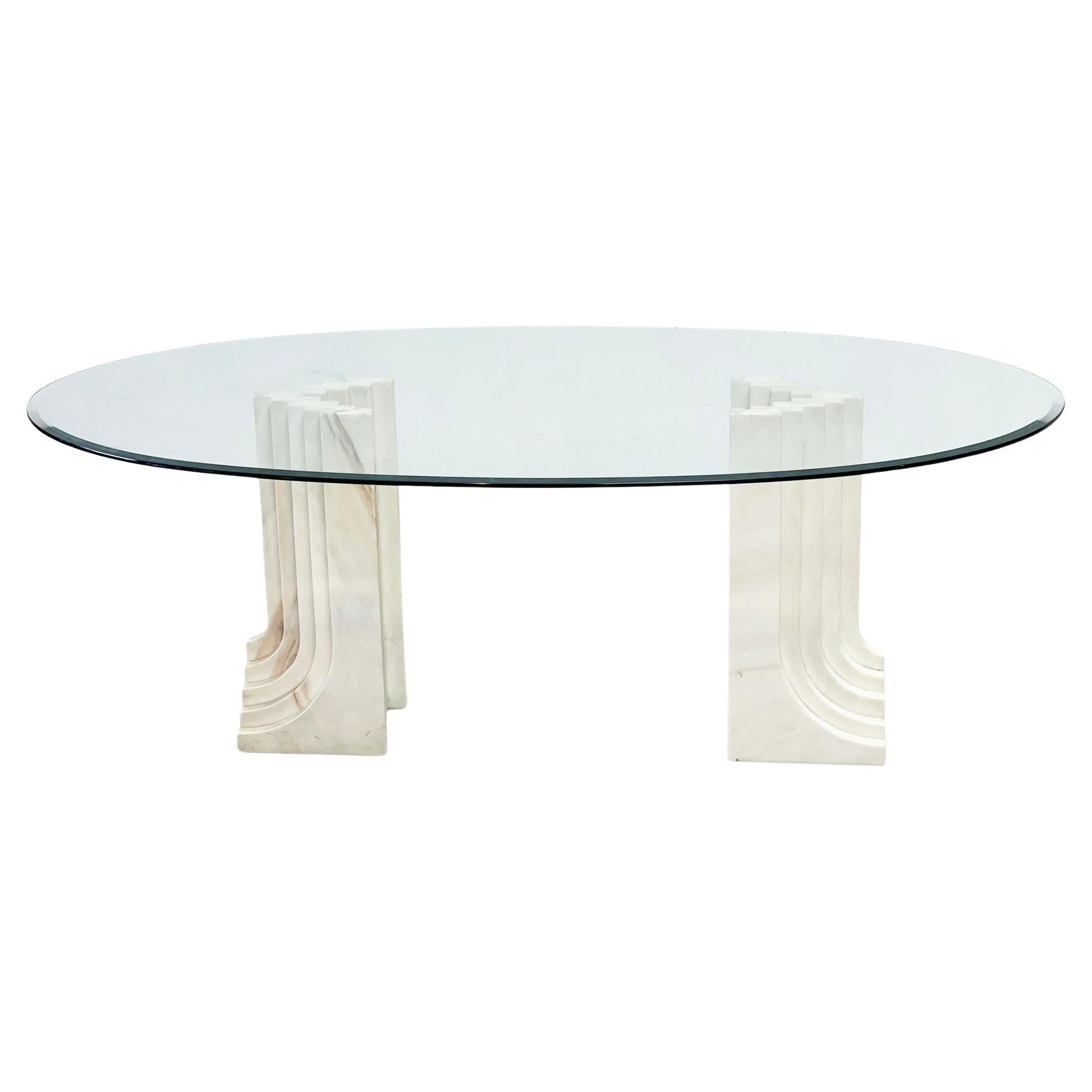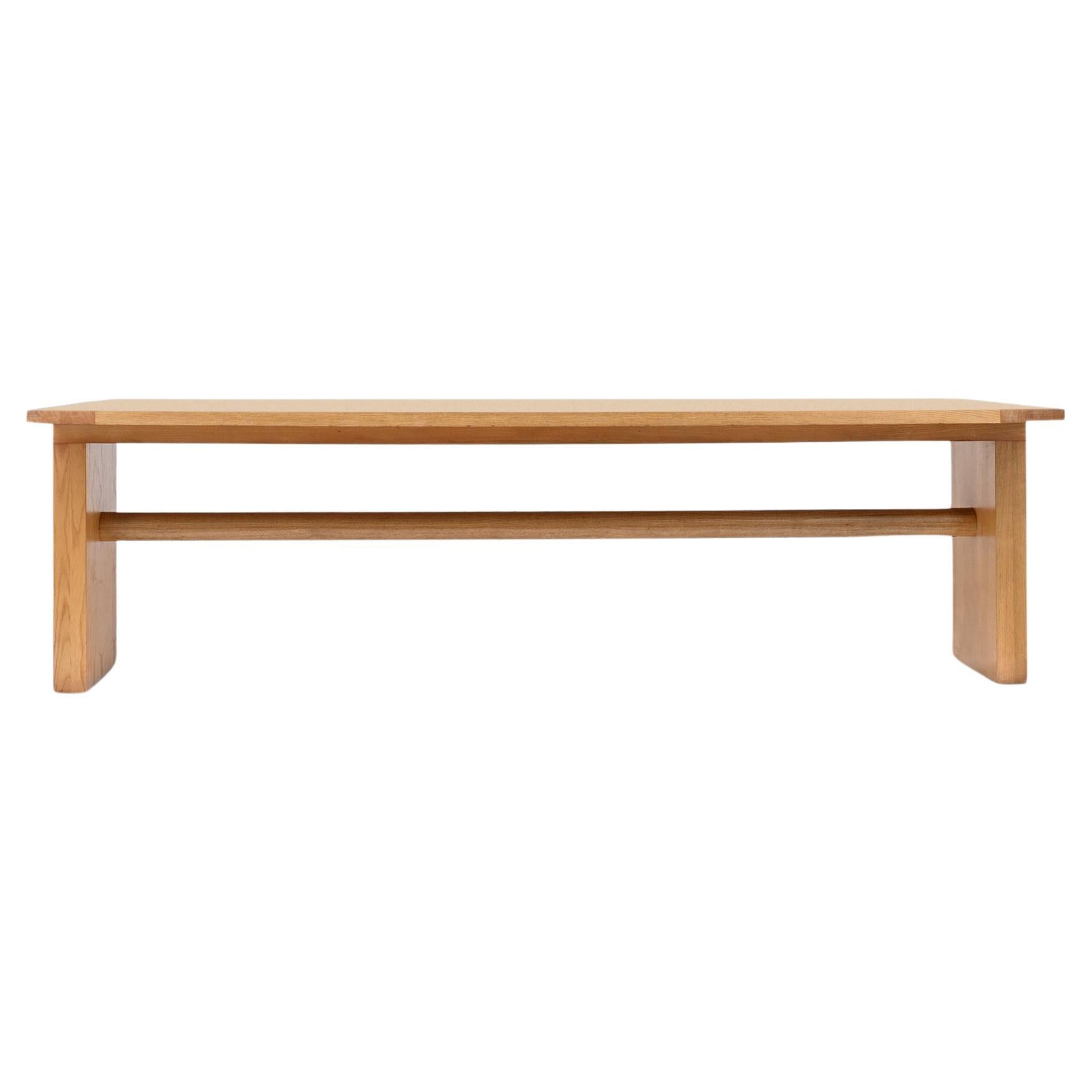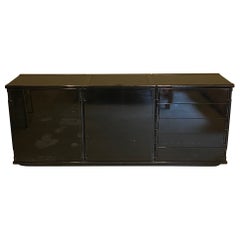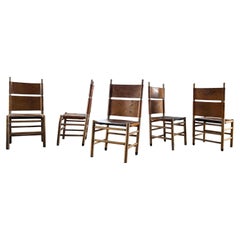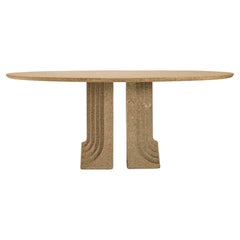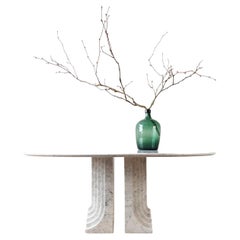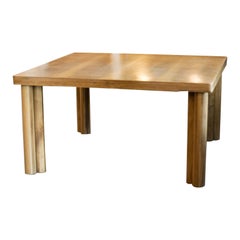
Carlo Scarpa "Kentucky" Dining Table, Italy, 1970s
View Similar Items
Carlo Scarpa "Kentucky" Dining Table, Italy, 1970s
About the Item
- Creator:Carlo Scarpa (Designer),Bernini (Manufacturer)
- Dimensions:Height: 28.25 in (71.76 cm)Width: 53.5 in (135.89 cm)Depth: 53.5 in (135.89 cm)
- Style:Mid-Century Modern (Of the Period)
- Materials and Techniques:
- Place of Origin:
- Period:
- Date of Manufacture:1970s
- Condition:Wear consistent with age and use. Minor fading. Table surface presents quite well and at some angles looks almost perfect. At other angles subtle inconsistencies in the finish are visible. Typical for its age.
- Seller Location:Austin, TX
- Reference Number:1stDibs: LU1140217485322
Carlo Scarpa
Carlo Scarpa was born in Venice in 1906 and became one of the leading figures of architecture and international design during the 20th century. At merely 21 years old — and still a student at the Academy of Fine Arts — Scarpa began working as a designer for master Murano glassmaker M.V.M. Cappellin. Within a few years, he completely revolutionized the approach to art glass.
In a short time, under the guidance of Scarpa, the Capellin furnace not only established itself as the top glass company, but above all it introduced modernity and international fame to Murano glassmaking. Scarpa created a personal style of glassmaking, a new vision that irreversibly changed glass production.
The young Scarpa experimented with new models and colors: his chromatic combinations, impeccable execution and geometric shapes became his modus operandi. Thanks to Scarpa’s continuous research on vitreous matter, Cappellin produced a series of high-quality glass objects, that saw the company revisiting ancient processing techniques such as the watermark and Phoenician decoration.
When he encountered the challenge of opaque glass, Scarpa proposed introducing textures of considerable chromatic impact, such as glass pastes and glazed glass with bright colors. Scarpa also collaborated in the renovation of Palazzo da Mula in Murano, the home of Cappellin. At the academy, he obtained the diploma of professor of architectural design and obtained an honorary degree from the Venice University Institute of Architecture of which he was director.
In 1931, Scarpa's collaboration with Cappellin ended, following the bankruptcy of the company because it was not able to withstand the economic crisis linked to the Great Depression. But Scarpa did not go unnoticed by Paolo Venini — in 1933, the young designer became the new artistic director of the biggest glass company in Murano.
Master glassmakers thought Scarpa's projects and sketches were impossible, but the passionate and curious designer always managed to get exactly what he wanted. Until 1947 he remained at the helm of Venini & Co., where he created some of the best known masterpieces of modern glassmaking. Scarpa’s work with Venini was characterized by the continuous research on the subject, the use of color and techniques that he revisited in a very personal way, and the development of new ways of working with master glassmakers.
At the beginning of the 1930s, "bubble", "half filigree" and "submerged" glass appeared for the first time on the occasion of the Venice Biennale of 1934. A few years later, at the Biennale and the VI Triennale of Milan, Venini exhibited its lattimi and murrine romane pieces, which were born from a joint idea between Scarpa and Paolo Venini.
In 1938 Scarpa increased production, diversifying the vases from "objects of use" to sculptural works of art. In the same year he laid the foundation for the famous "woven" glass collection, exhibited the following year. In the subsequent years, Scarpa–Venini continued to exhibit at the Biennale and in various other shows their the "black and red lacquers," the granulari and the incisi, produced in limited series, and the "Chinese," which was inspired by Asian porcelain.
Scarpa's creations for Venini garnered an international response and were a great success, leaving forever an indelible mark on the history of glassmaking. The last Biennale in which Carlo Scarpa participated as artistic director of Venini was in 1942. He left the company five years later.
The time that Scarpa spent in the most important glass factory in Murano would attach a great artistic legacy to the company. His techniques and styles were resumed in the postwar period under the guidance of Tobia Venini, Paolo's son. In the 1950s, after the departure of Scarpa, Fulvio Bianconi was the new visionary at the Biennials with Venini.
On 1stDibs, vintage Carlo Scarpa glass and furniture are for sale, including decorative objects, tables, chandeliers and more.
(Biography provided by Ophir Gallery Inc.)
- Guillerme et Chambron Oak and Tile Dining Table with Extensions, France, 1960'sBy Guillerme et Chambron, Boleslaw DanikowskiLocated in Austin, TXFrench oak extension dining table with sculptural base. Separate leaves have pull-out supports at either end to extend the length. Designed by midcentury French design duo Robert Guillerme and Jacques Chambron, and produced in their own shop, "Votre Maison." Frequent collaborator and ceramicist, Boleslaw Danikowski, designed the blue and green ceramic tile inserts. France, circa 1960. Extensions measure 17.5" x 37.5" each. When fully extended the table measures 108 inches...Category
Mid-20th Century French Mid-Century Modern Dining Room Tables
MaterialsOak, Ceramic
$6,860 Sale Price46% Off - Italian Mazzega Sconces with Murano Glass, 1970sBy AVMazzegaLocated in Austin, TXItalian Mazzega wall sconces with black and brass bases and amber Murano glass panels. Glass shines up from center of fixture, which holds one candelabrum based bulb. Attributed to C...Category
Vintage 1970s Italian Mid-Century Modern Wall Lights and Sconces
MaterialsBrass
$2,430 / set - Gianfranco Frattini Larco Series Sideboard for Molteni, Italy, 1970sBy Gianfranco FrattiniLocated in Austin, TXRare Gianfranco Frattini Larco Series sideboard for Molteni. Black lacquer and high gloss acrylic surfaces are contrasted with inset matte black panels on the top surface. Built as...Category
Mid-20th Century Italian Mid-Century Modern Sideboards
MaterialsPlastic, Acrylic, Lacquer
- Roche Bobois Marble Double Pedestal Cocktail Table, France, 1970sBy Roche BoboisLocated in Austin, TXArchitectural and elegant polished marble double pedestal "eye" shape cocktail table by Roche Bobois. Symmetrical top with full bullnose profile edge nests inside of two panel bases ...Category
Mid-20th Century French Mid-Century Modern Coffee and Cocktail Tables
MaterialsMarble
- Italian Leather Sling Chair, 1960'sBy BerniniLocated in Austin, TXHandsome cognac and beech sling chair with unique details at arms and back. Comfortable as is or with the addition of a seat cushion. Style of Bernini, Italy, 1960's.Category
Vintage 1960s Italian Mid-Century Modern Chairs
MaterialsLeather, Beech
- Silvio Coppola for Bernini Sideboard in Walnut, Italy, 1960'sBy Silvio Coppola, BerniniLocated in Austin, TXWalnut sideboard by Silvio Coppola for Bernini. Small production Italian designer who's work is rarely available in the US. Italy, 1960'sCategory
Vintage 1960s Italian Mid-Century Modern Sideboards
MaterialsWalnut
- Carlo Scarpa Cognac Leather “Kentucky” Dining Chair for Bernini, 1977, Set of 5By Carlo Scarpa, BerniniLocated in Vicenza, ITSet of 5 mod. 783 “Kentucky” dining chairs, designed by Carlo Scarpa for the Italian manufacturer Bernini in 1977. Structure made from oak and walnut timber. Seats and backrest made from cognac leather. Excellent vintage condition. Carlo Scarpa designed this chair for the “Scuderia” series., the last project he made for Bernini. The architect took inspiration from the “shaker” movement. He designed the chair slightly inclined at the front. This feature allows you to swing backward (until you lean on a wall) and remain in balance. Born in Venice on June 2nd, 1906, Carlo Scarpa began working at a very early age. A year after he had first qualified as an architect in 1926, he began working for the Murano glassmakers Cappellin & Co. in a consultative capacity. From 1927, Carlo Scarpa began to experiment with the Murano glass, and this research not only gave him excellent results here but would also inform his progress for many years to come. Between 1935 and 1937, as he entered his thirties, Carlo Scarpa accepted his first important commission, the renovation of Venice’s Cà Foscari. He adapted the spaces of this stately University building that stands on the Grand Canal banks, creating rooms for the Dean’s offices and a new hall for academic ceremonies; Mario Sironi and Mario De Luigi were charged with doing the restoration work on the frescos. After 1945, Carlo Scarpa found himself constantly busy with new commissions, including various furnishings and designs for the renovation of Venice’s Hotel Bauer and designing a tall building in Padua and a residential area in Feltre, all worth mentioning. One of his key works, despite its relatively modest diminished proportions, was the [bookshop known as the] Padiglione del Libro, which stands in Venice’s Giardini di Castello and clearly shows Scarpa’s passion for the works of Frank Lloyd Wright. In the years which were to follow, after he had met the American architect, Scarpa repeated similar experiments on other occasions, as can be seen, in particular, in the sketches he drew up in 1953 for villa Zoppas in Conegliano, which show some of his most promising work. However, this work unfortunately never came to fruition. Carlo Scarpa later created three museum layouts to prove pivotal in terms of how twentieth-century museums were set up from then on. Between 1955 and 1957, he completed extension work on Treviso’s Gipsoteca Canoviana [the museum that houses Canova’s sculptures] in Possagno, taking a similar experimental approach to the one he used for the Venezuelan Pavilion at [Venice’s] Giardini di Castello which he was building at the same time (1954-56). In Possagno Carlo Scarpa was to create one of his most significant ever works, which inevitably bears comparison with two other museum layouts that he was working on over the same period, those of: – Galleria Nazionale di Sicilia, housed in the Palazzo Abatellis in Palermo (1953-55) – Castelvecchio in Verona (1957- 1974), all of which were highly acclaimed, adding to his growing fame. Two other buildings, which are beautifully arranged in spatial terms, can be added to this long list of key works that were started and, in some cases, even completed during the nineteen fifties. After winning the Olivetti award for architecture in 1956, Scarpa began work in Venice’s Piazza San Marco on an area destined to house products made by the Industrial manufacturers Ivrea. Over the same period (1959-1963), he also worked on the renovation and restoration of the gardens and ground floor of the Fondazione Querini Stampalia in Venice, which many consider one of his greatest works. While he busied himself working on-site at the Fondazione Querini Stampalia, Carlo Scarpa also began work building a villa in Udine for the Veritti family. To shed some light on the extent to which his work evolved over the years, it may perhaps be useful to compare this work with that of his very last building, villa Ottolenghi Bardolino, which was near to completion at the time of his sudden death in 1978. Upon completion of villa Veritti over the next ten years, without ever letting up on his work on renovation and layouts, Scarpa accepted some highly challenging commissions, working on the Carlo Felice Theatre in Genoa and another theatre in Vicenza. Towards the end of this decade, in 1969, Rina Brion commissioned Carlo Scarpa to build the Brion Mausoleum in San Vito d’Altivole (Treviso), a piece he continued to work on right up until the moment of his death. Nevertheless, even though he was totally absorbed by work on this mausoleum, there are plenty of other episodes which can offer some insight into the final years of his career. As work on the San Vito d’Altivole Mausoleum began to lessen from 1973, Carlo Scarpa started building the new headquarters for the Banca Popolare di Verona. He drew up plans that were surprisingly different from the work he was carrying out at the same time on the villa Ottolenghi. However, the plans Carlo Scarpa drew up, at different times, for a monument in Brescia’s Piazza della Loggia commemorating victims of the terrorist attack on May 28th, 1974, make a sharp contrast to the work he carried out in Verona, almost as if there is a certain hesitation after so many mannered excesses. The same Pietas that informs his designs for the Piazza Della Loggia can also be seen in the presence of the water that flows through the Brion Mausoleum, almost as if to give a concrete manifestation of pity in this twentieth-century work of art. Carlo Scarpa has put together a highly sophisticated collection of structures, occupying the mausoleum’s L-shaped space stretching across both sides of the old San Vito d’Altivole cemetery. A myriad of different forms and an equally large number of different pieces, all of which are separate and yet inextricably linked to form a chain that seems to offer no promise of continuity, rising up out of these are those whose only justification for being there is to bear the warning “si vis vitam, para mortem,” [if you wish to experience life prepare for death] as if to tell a tale that suggests the circle of time, joining together the commemoration of the dead with a celebration of life. At the entrance of the Brion Mausoleum stand the “propylaea” followed by a cloister which ends by a small chapel, with an arcosolium bearing the family sarcophagi, the main pavilion, held in place on broken cast iron supports, stands over a mirror-shaped stretch of water and occupies one end of the family’s burial space. The musical sound of the walkways teamed with the luminosity of these harmoniously blended spaces shows how, in keeping with his strong sense of vision, Carlo Scarpa could make the most of all of his many skills to come up with this truly magnificent space. As well as a great commitment to architectural work, with the many projects which we have already seen punctuating his career, Carlo Scarpa also made many equally important forays into the world of applied arts. Between 1926 and 1931, he worked for the Murano glassmakers Cappellin, later taking what he had learned with him when he went to work for the glassmakers Venini from 1933 until the 1950s. The story of how he came to work on furniture design is different, however, and began with the furniture he designed to replace lost furnishings during his renovation of Cà Foscari. The later mass-produced furniture started differently, given that many pieces were originally one-off designs “made to measure.” Industrial manufacturing using these designs as prototypes came into being thanks to the continuity afforded him by Dino Gavina, who, as well as this, also invited Carlo Scarpa to become president of the company Gavina SpA, later to become SIMON, a company Gavina founded eight years on, in partnership with Maria Simoncini (whose own name accounts for the choice of company name). Carlo Scarpa and Gavina forged a strong bond in 1968 as they began to put various models of his into production for Simon, such as the “Doge” table, which also formed the basis for the “Sarpi” and “Florian” tables. In the early seventies, other tables that followed included “Valmarana,” “Quatour,” and “Orseolo.” While in 1974, they added couch and armchair “Cornaro” to the collection and the “Toledo” bed...Category
Vintage 1970s Italian Mid-Century Modern Dining Room Tables
MaterialsWalnut, Leather, Plastic
- Carlo Scarpa 'Samo' Dining Table for Simon Gavina, Italy, 1970sBy Carlo Scarpa, Simon Gavina EditionsLocated in Hellouw, NLThis Italian dining table from the 1970s exudes timeless elegance and beauty. It was designed by perhaps one of the prominent Italian modernist designers of the last century. What im...Category
Vintage 1970s Italian Mid-Century Modern Dining Room Tables
MaterialsGranite
- White Carrara Marble Oval Dining Table by Carlo Scarpa, Italy, 1970sBy Carlo ScarpaLocated in Baambrugge, NLStunning white Carrara marble dining table, model Samo, designed by Carlo Scarpa and Manufactured by Simon, Italy 1970s. It is an original design by the Italian designer / architec...Category
Vintage 1970s Italian Dining Room Tables
MaterialsCarrara Marble
- Dining Room Marble Table Attributed to Carlo Scarpa, Italy 1970.By Carlo ScarpaLocated in Brussels, BESpectacular pink beige marble dining table in three parts. The top is resting on a stepped base. Attributed to Scarpa, Italy 1970.Category
Vintage 1970s Italian Mid-Century Modern Dining Room Tables
MaterialsMarble
- Carlo Scarpa Samo 1970s Italian Dinning Table Edited by SimonBy Carlo ScarpaLocated in Madrid, ES"Samo" table designed by Carlo Scarpa and edited by Simon. Composed of two grey granite sculptural bases and an oval table top of the same material. Italy 1970s. Our main target is ...Category
Vintage 1970s Italian Mid-Century Modern Dining Room Tables
MaterialsGranite
- Sculptural Carlo Scarpa Travertine Dining Table, by Cattelan Italia, 1970sBy Carlo Scarpa, Cattelan ItaliaLocated in Renens, CHOval travertine dining table by the Italian Architect Carlo Scarpa, designed during the 1970s. With its sculptural pedestal base and polished travertine table top this piece is Scarpa’s modern take on Classic architecture. A striking centrepiece in any space. The table separates...Category
Vintage 1980s Italian Post-Modern Dining Room Tables
MaterialsTravertine
